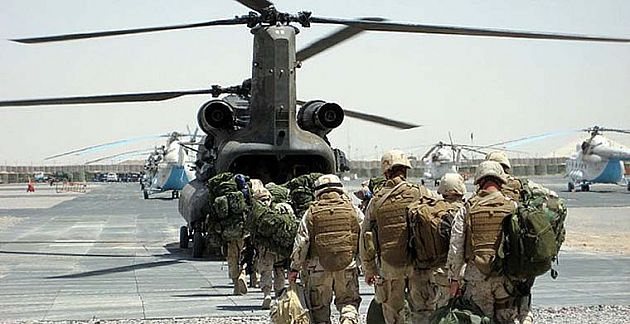Withdrawal of NATO Forces and an Unclear Afghan Future

NATO forces left Afghanistan after 13 years. What will the security consequences of this decision be?
During the past few days, NATO forces have left Afghanistan and the security of this country has been delivered to the Afghan forces. During its 13 years of stay in Afghanistan, NATO has presented documents which are not reliable. The NATO forces’ attempts were aimed more at providing their own security and their presence may continue in the future in another form. During the presence of NATO forces, Afghanistan’s National Camp was supposed to be trained and equipped so that they could powerfully perform their task of providing the security of Afghanistan but this objective was not achieved. Furthermore, 140000 NATO forces could not provide the security. Now the NATO forces have left Afghanistan. They are delivering part of the security tasks to the government forces and national camp and Afghanistan is supposed to have its complete independence and freedom. The current issue is the change in the NATO forces’ presence in Afghanistan. 13000 NATO forces will remain in this country for training and consultation. Thus, they may indirectly remain there for many years, maybe 10. This is while the Taliban is a big challenge for Afghanistan. Foreign forces have not yet been able to stand against this challenge. The Taliban is still active in this country and, with the absence of NATO forces, they may increase their activities because the national camp may not be ready yet to fight against the Taliban which is equipped by foreign forces.
Is there the possibility that, after the exit of NATO forces, the Taliban will increase its measures against the security of Afghanistan and that military forces will return to this country? Or will NATO keep this limited number of its forces and only execute air strikes?
It seems impossible that foreign forces would return to Afghanistan. Their 13000 forces could administer the national camp. If help is needed at some juncture, some forces may be added to manage the local and national forces so that the high expenses of the past would not be repeated. In fact the remaining NATO forces will recruit local forces to pursue their measures.
Is there the possibility that similar events which happened in Iraq will occur in Afghanistan as well?
It seems impossible that similar security conditions would be created in Afghanistan. Nonetheless, Afghanistan’s geographical conditions would cause sporadic unrests and interventions. Of course, foreign forces in Afghanistan will act in a way so that the power of local forces would remain weak and their presence would continue. Through this path, they will be able to manage local forces and the national camp would not gain complete power.
Afghanistan is still facing certain political challenges particularly with the establishment of the government and cabinet. Of course, the president has determined the tasks of the head of the executive council. Considering the simultaneity of this challenge with the exit of foreign forces, what future would be possible for the political system of this country?
Afghanistan was faced with a big challenge. After the election, two candidates were introduced as the two chief officials of this country; one is the president and the other is the chief of the executive council. Although the executive consultations body is supposed to be legalized in the parliament, the process needs a long time to be completed. Despite the fact that Ashraf Ghani has described Mr. Abdullah’s responsibilities, the cabinet is not yet introduced. There is no clear perspective for this issue either. This issue can create a big challenge for Afghanistan. People may come to the streets to express their demands. This problem must be resolved soon. Otherwise, the structure of the government of national unity would be weakened. There might be some friction in the responsibilities of the president and the head of the executive council, but they should work out their differences and divide their duties within the framework of the cabinet.

